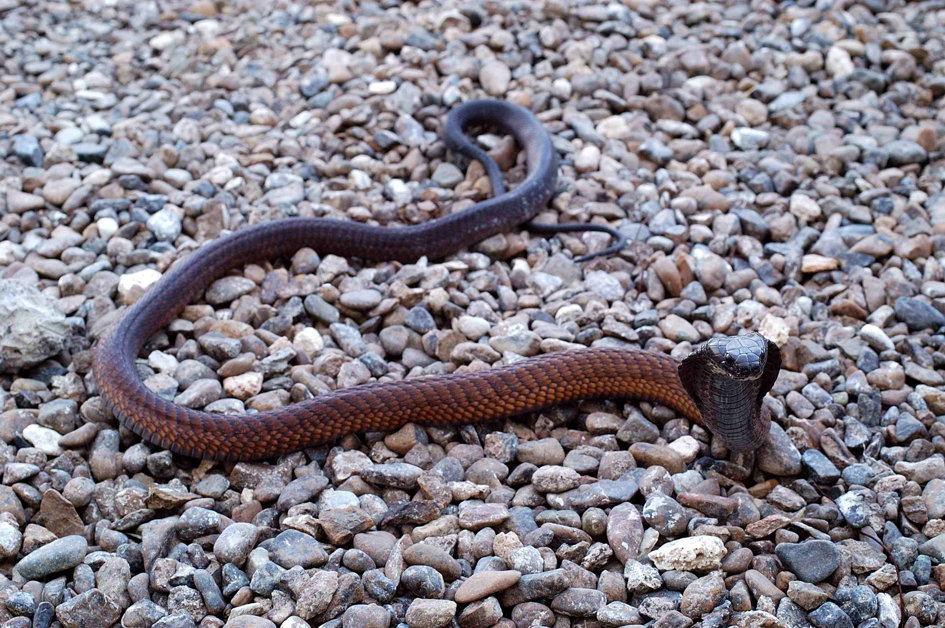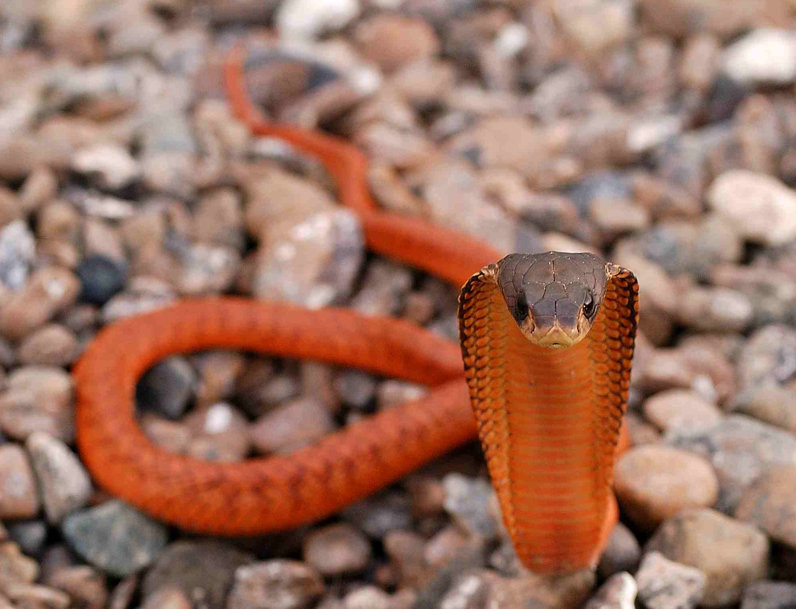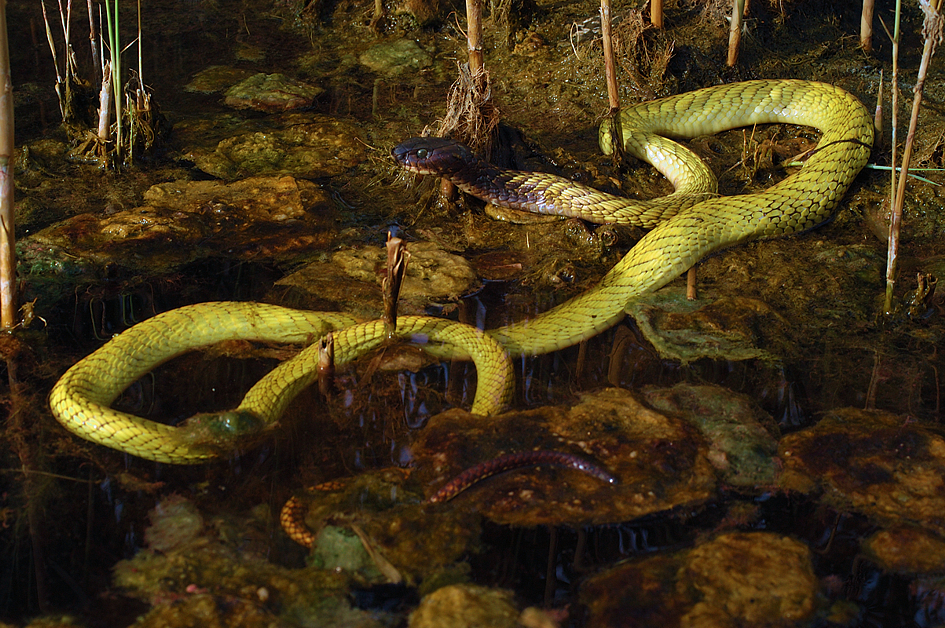The flourescent one was wild, and it was early spring, so I'm guessing he needed to beef up a bit after the cold winter. The orange one with the yellow head is a bit dull in this pic as he was pre-shed. He's usually quite satiny.
Strangely they are not desert snakes at all and are in no way arid-adapted (bit of a bugger living in Arabia and all). Their distribution follows the Afro-tropical belt, which has reasonably high rainfall and generally very cold winters. The landscape throughout much of their range is reminiscent of the Limpopo escarpment. They also like altitude and are most common above 1000m ASL. You seldom find them far from permanent water and they feed heavily on toads.
In certain areas they are fairly common, but ironically, in these areas (like Sana'a and Ta'iz, in Yemen) they all tend to be dull brown. In the North of their range (Saudi Arabia), they are locally more scarce, but highly vairable, where just about anything goes.








